Subscriber Benefit
As a subscriber you can listen to articles at work, in the car, or while you work out. Subscribe NowA unique conference addressing improvements to juvenile justice systems in various communities nationwide drew experts to Indianapolis recently to share information.
The daylong “Summit on Racial Disparities in the Juvenile Justice System: A Statewide Dialogue,” organized by the Indiana State Bar Association, Indiana Supreme Court Administration, and the Indiana Criminal Justice Institute, took place Aug. 27. The conference was a followup to a study by the Commission on Disproportionality in Youth Services, which was established by the Indiana General Assembly in 2007.
That study showed that in Indiana there is evidence of disproportionate minority confinement, or DMC, but the conference wasn’t just about the numbers – it was also about improving the circumstances behind the statistics. One of the conference’s main goals was to bring all stakeholders to the table to listen to what has worked for other communities and to discuss the issues that might discourage DMC when arresting, charging, and sentencing youth.
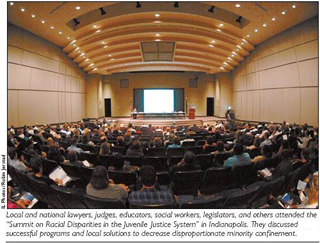
The event did just that; politicians, lawyers, judges, social workers, educators, law enforcement officers, and even parents were in the audience to hear experts in the field share stories and suggestions about how similar programs can be implemented in Indiana.
In his opening remarks, ISBA president R. William Jonas Jr. said the state bar was proud to move forward on the issue as he emphasized the focus should be on each individual child in the system and what is best for them.
“This is a little bit of a touchy subject,” he said to a room full of nodding heads and muffled agreement. “It can be difficult to talk about. The speakers may challenge your ideas. From the ISBA’s perspective, we want those challenges. We want concrete steps to bring us to solutions.”
The working chairs were Marion Superior Judge Tanya Walton Pratt and Lake Circuit Judge Lorenzo Arredondo. The honorary chairs were Indiana Supreme Court Chief Justice Randall T. Shepard and Rep. William Crawford, D-Indianapolis.
Chief Justice Shepard thanked those who were participating because, he said, he knew they were there and doing the work they do not because they had to, but because they wanted to help those in the juvenile justice system.
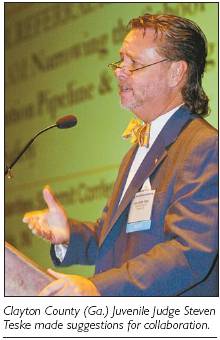 “People show up again and show up again because it matters to them,” he said.
“People show up again and show up again because it matters to them,” he said.
He added while the state has never been color blind, that hasn’t prevented Hoosiers from making progressive changes.
Speaker Michael Patchner, dean of the Indiana University-Purdue University Indianapolis School of Social Work, thanked the legislature for enacting laws that were a direct result of the commission’s recommendations. He said when he first started working with the commission, he noticed the automatic doors were there for people with disabilities, yet they were also helpful to everyone, including him. That experience, he said, made him realize that regulations that were meant to help one part of the community were also beneficial to the rest of the community, much like the programs discussed during the summit.
Role models
Among the speakers who highlighted successful programs were a judge in Georgia; an advocate who worked with police for the Massachusetts Bay Transit Authority in Boston; the Madison, Wis., chief of police; a district attorney for the juvenile unit in Portland, Ore.; a prominent civil rights attorney based in Washington, D.C.; the founder of the Juvenile Justice Initiative in Illinois; and the founder of a national organization based in San Francisco.
Judge Steven Teske of Clayton County, Ga., said he had met with several juvenile court judges in Indiana to look over the code and see what could be changed.
For the program in his county, Judge Teske said it was a matter of determining which types of offenses were being punished and how that was taking away from the officers’ real reason for being in the school: as a deterrent to unsafe behavior and drugs. Looking at the numbers, 90 percent of arrests were misdemeanors. Of those, most were for disrupting school, fights, and disorderly conduct. He said these were the kinds of things most high school students would do, only it would be more appropriate for them to be sent to the principal’s office and not to a police officer.
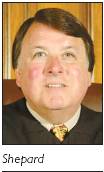 After working with teachers and officers to overhaul the system, Judge Teske’s caseload dropped from 165 to 30. Those 30, he said, are the ones who truly needed to be in the system.
After working with teachers and officers to overhaul the system, Judge Teske’s caseload dropped from 165 to 30. Those 30, he said, are the ones who truly needed to be in the system.
School resource officers could then spend more time at schools where they could oversee those who needed to be supervised. Recidivism was reduced, and the community became a safer place as more crimes outside of the schools were being solved with help from students.
In one case, a school resource officer’s conversation with a student using profanity led to a drug dealer’s arrest, explained Sgt. Mark Richards, who oversees the school resource officers in Clayton County. Other crimes such as homicides and armed robberies have been solved with the help of students.
There were many challenges in the collaborative process, he said, suggesting those who want to consider their own systems start by talking to stakeholders individually and to have a neutral mediator facilitate conversations.
Lisa Thurau of Strategies for Youth in Cambridge, Mass., had a similar experience. When she learned many minority students were being arrested on Boston’s public transit, she discovered all the students were being arrested at the same stop by the same handful of officers when school was released. After a struggle with the transit authority, including press involvement, she eventually got them to the table.
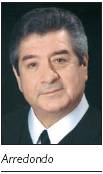 Since 2004, the StopWatch Program she helped create has dramatically decreased arrests of students.
Since 2004, the StopWatch Program she helped create has dramatically decreased arrests of students.
She has also worked to educate youths and their parents about how to interact with police, has worked with police departments in Cambridge and Everett, Mass., and is currently training police in Nantucket on how to interact with youth.
Optimistic for change
While it’s a daunting task to make the kinds of sweeping changes participants learned about through other national examples, this summit was meant to show the stakeholders in Indiana that it’s not impossible if others could do it, like lunch keynote speaker James Bell, founder of the W. Haywood Burns Institute in San Francisco, which considers DMC issues.
“You must know and believe in the depths of your soul that this is a solvable problem,” he said.
To do this, he suggested participants focus on specific goals by eliminating abstractions, reach a consensus regarding the purpose of detention, and build a collaborative model for all involved.
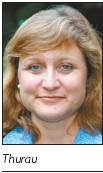 To do that in Indiana, at the end of the summit an 18-member panel discussed what comes next to make sure these issues are addressed and remain a priority.
To do that in Indiana, at the end of the summit an 18-member panel discussed what comes next to make sure these issues are addressed and remain a priority.
A summit report will be released in December, and after that a working group will continue for six to nine months, a way that planning committee member Dr. Daniel Lowry said will ensure “this isn’t the end of the story, but the beginning.”
For more information about the summit, including the Indiana Commission on Disproportionality in Youth Services 2008 Final Report, visit the ISBA’s Web site, www.inbar.org
Please enable JavaScript to view this content.
